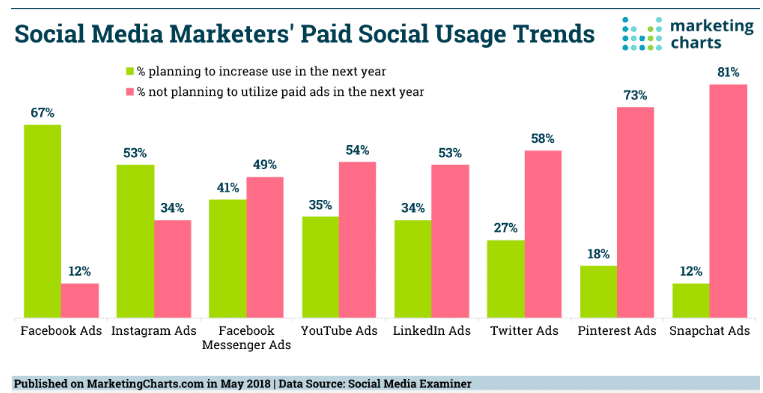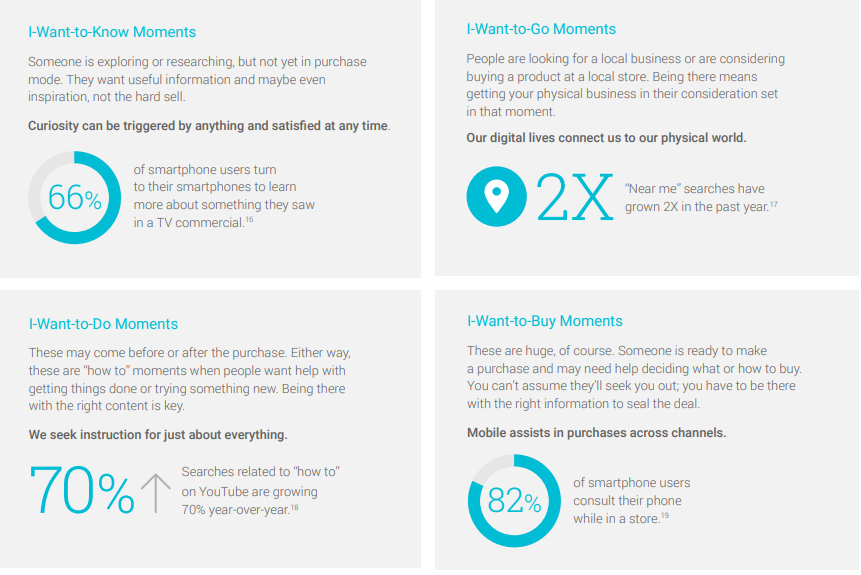11 Digital Marketing Trends You Can No Longer Ignore in 2020
Digital marketing is an ever-evolving industry. Its trends come and go faster than the Marvel Cinematic Universe can release a new movie. Those that stay longer are bound to go through makeovers at some point.
For example, the trend before was blogs. Then, it was followed by vlogs. Nowadays, with artificial intelligence making magic at the user level, the next darling of digital marketing is just waiting at the backstage to be introduced.
This is why you have to keep abreast of the changes and watch out for forecasts that may give you a first-mover advantage. You may find one or two in this article.
11 Digital Marketing Trends You Can No Longer Ignore in 2020
Adopt the Omnichannel Approach
Maintaining one channel for customer outreach may work if you are a high-equity, global brand. Amazon, for instance, is one. As a small business, it can be quite counterintuitive to spend money on multiple channels. Your resources are limited, and digital marketing is not the only area you’re developing.
But hear me out. An omnichannel approach lets you integrate a wide range of online tools that can maximize your visibility. Some of them, like social and content marketing, cost little to nothing. Aligning goals and channels with the budget now depends on you. This is where a digital marketing strategy plays a crucial part.
So even if you’re a relatively unknown brand with just enough capital, you can leverage several marketing channels at a time. Actually, as a relatively unknown brand with just enough capital, you must test a mix of online marketing tactics to learn fast how you’ll stand out.
Optimize for Voice Search
You may be wondering why I’m including voice search here. It certainly hasn’t taken over search. It probably won’t this year, right? But the data shows us a different picture.
Today, the volume of voice search queries is over 35% higher than in 2008 and 7% higher than in 2010. Alpine AI, which was acquired by Headspace, reported that there were an estimated one billion searches per month as of January 2018. ComScore puts it at 50% of all searches by 2020.
As Google, Alexa, Siri, Cortana, and other voice-enabled technology continue to penetrate our daily lives, SEO as we know it will be gone. If users aren’t using screens to send voice queries, ranking high on search will lose many of its advantages. Google, for instance, will have control over which websites it pulls information from. That’s definitely a game-changer. And we marketers have to prepare for it.
Explore Other Search Engines
Blogs are becoming more and more saturated as we speak. Getting on page 1 of Google may not be the most ideal track anymore. The more strategic path is to enforce traditional SEO while also exploring new frontiers.
I’m talking specifically about YouTube, the world’s second largest search engine. It boasts of a whopping one billion active users, most of whom are between 18 and 49 years old. But you may ask: Why should I jump aboard the YouTube train? The main reason is content. Around 59% of executives prefer watching videos over reading text. Visual content is much easier to consume, so bring it.
Audio content, such as podcasts, is also showing some promise. So you might as well check out how to rank on the iTunes store, wherein 45% of the audience come from households with an income of $75,000 or more.
Don’t worry about the production equipment and expenses. Smartphones are now powerful enough to record quality video and audio. And people these days are drawn to the authentic look and feel.
Consider Interactive Videos
Take it one notch higher by introducing interactive videos, which are designed to increase engagement. They also incorporate another rising, innovative tech: augmented reality (AR). Netflix has been tinkering with the concept and has been recently successful with Black Mirror: Bandersnatch.
But perhaps, this interactive guided city tour is a more doable example.
To get started, you can try freemium tools like Verse.
Create an IGTV Channel
For the third time, videos are in! And mobile photo-sharing platform Instagram has come up with its own video-sharing concept. So, if you’re not still convinced by now, maybe you should check out IGTV.
To create an IGTV channel, you need to have an existing profile on Instagram. The social network is known as a friendly place for influencers and brands, so you’re hitting two birds with one stone here. Once you have an Instagram presence, you can set up a channel and start uploading your vertical videos on IGTV.
Now, you might be thinking, "But we have Instagram Stories already." Why choose IGTV over it? Well, the answer lies in the format. Instagram Stories are disappearing videos that you can choose to highlight or not highlight on your profile page. IGTV accommodates longer run times and playback features.
Quick tutorials, unboxings, and explainers are perfect for IGTV.
Invest in Facebook and Instagram Ads
There is an uptrend in the use of paid social media ads by brands, particularly on Facebook and Instagram. In fact, these two networks are preferred by marketers more than any other platforms. The following graph, created by QuickSprout, shows Facebook and Instagram getting more positive responses than the others.

Credit: QuickSprout
I think one of the reasons marketers favor them is that Facebook has the targeting and remarketing metrics down to the T. It also allows you to use customer lifetime value, which lets you focus on customers who are primed to convert. And since Instagram is a Facebook company, the same features and benefits are available to Instagram Ads users.
Of course, the secondary reason is that Facebook and Instagram have over three billion monthly active users between them.
Make Predictive Analytics Part Of Your Life
As a digital marketer, I admit quantifying results and justifying budget requests aren’t easy tasks. That’s especially hard if you report to someone who doesn’t understand digital marketing yet. But thanks to the amount of data within your reach, you can apply predictive analytics to your campaigns.
For example, there are ways now to look into channels at the granular level. You can learn how much a blog post or tweet contributed to your revenue. You can also crunch data to compare retention rates based on which gateway campaign ushered in the most valuable long-term customers.
If you’re part of the 26% of businesses who have no plans of using predictive analytics in the near future, it’s about time you reconsider.
Facilitate Mobile Payments
Are you in the e-commerce industry?
If you aren’t offering mobile payment options yet, you must have a good reason for doing so. Otherwise, you’re creating a bottleneck in the overall user experience. Something as simple as allowing PayPal integration at checkout can make payment seamless for your customers.
Get this: By 2020, mobile contactless users will reach more than 760 million. Apple Pay, Samsung Pay, and Google Pay will account for 450 million. Think ahead of how you can make life easier for some of these people.
Some e-commerce hosting sites already offer one or more kinds of mobile payments into their premium plans. Squarespace and Shopify are two examples I can think of. Having your shop hosted on any of these sites is pretty straightforward. And their pricing plans are affordable, too.
Activate Chatbots
Chatbots are one of the simplest applications of artificial intelligence in digital marketing. There are reportedly 1.4 billion people who interact with chatbots per year. Some perks of chatbot engagement include faster response, accurate recall of buyer’s historical data, and an endless supply of patience.
There are many ways a chatbot can help brands. Sephora has used chatbots to let users book or modify a makeover appointment. Fintech startup Trim has deployed a Messenger chatbot that provides balances and transaction details to customers so they won’t have to log into their bank account.
Understand Micro-Moments
With Micro-Moments, Google highlights the intent behind a customer whipping out their smartphone to perform a search. While funnels are still important in mapping the customer journey, Google says some small moments lie very close to a purchase decision. And the tech giant calls them:
I-want-to-know moments
I-want-to-go moments
I-want-to-do moments
I-want-to-buy moments

Credit: Think With Google
Further, Google has reported that people usually conduct searches within pockets of time, like when they’re in line or waiting at the airport. Micro-Moments enable you to visualize what it’s like to be in your customer’s shoes during such moments.
Embrace the Funnel
When they hear the term funnel, some marketers may still think of the one used in email marketing. However, the funnel has now an expanded function.
The digital marketing funnel, which I described in detail in this article, is a helpful planning and visualizing tool. You can align content types and channels with a stage in the funnel, and then A/B test your content based on your KPIs for a certain channel.
Final Words
What can you say about these trends? Which among those discussed have you already been doing? Which ones are you planning to do this year? Let me know in the comments.
If this article has been helpful, please take the time to share it with someone who may also find it useful.
Are you in the middle of designing your digital marketing strategy? Make this ultimate digital marketing guide for beginners your on-the-go manual. It’s simple and easy to understand, so you can kick off your marketing campaigns ASAP.

